 James Van Praagh, spiritual medium
James Van Praagh, spiritual medium
On September 25th, I attended “An Evening with Spirit” hosted by James Van Praagh. I had read his most recent book, Adventures of the Soul, earlier this year, so I was intrigued by the idea of hearing Van Praagh speak when my mentor alerted me to this event. The event was held at Unity Church of the Hills in northwest Austin, just 10 minutes from my home.
As I have had issues around disability accommodation in recent months (in particular trying to see another psychic medium), I was concerned about being able to access this event without challenges. In particular, there were no paper tickets issued for the event. Instead, one had to show one’s driver’s license to gain admission. I feared that this would mean a huge line at the door to get in, and right now, I am not physically capable of standing for any extended amount of time. Thus, I contacted the ticketing company through their website the week before the event. I received no response. A few days before the event, I tried contacting the organizing company through their website. When I didn’t get a quick response, I tried calling the church. A volunteer named Joan answered the phone, and she responded with compassion and friendliness. I felt completely welcomed by her. She didn’t know the answers to my question and the paid staff was in a meeting, but she called me back within an hour with answers. She told me that there were benches in the lobby and that there would be church volunteers in the lobby who could assist me if I needed help with the line. I would be able to hand one of them my driver’s license and they could get me checked in. I felt so relieved by this information.
When I did eventually get a response from the organizing company, and it was far from adequate. The email I sent read, “I sent a message last week through your website but never heard back from anyone. I require disability assistance for the event and need to talk to someone who can assist me.” The woman who responded said, “The church is fully handicapped accessible, but we are not equipped to provide personal assistance. What kind of assistance were you looking for?” That response is a “no” in advance of knowing what I need which legally is the wrong answer under the ADA. Public events like this are required to provide reasonable accommodations. I was not asking for personal assistance, but the woman responding made assumptions before finding out the situation. My response to her was, “‘Fully handicapped accessible’ is relative; it actually doesn't encompass several of my disabilities. What that means in most cases the building is wheelchair accessible. I am mobility impaired but not in a wheelchair and need different accommodations.” Mercifully I had already talked to the church who had given me a compassionate response unlike the event organizers who said no in advance of finding out what I needed. This is the kind of thing that is VERY frustrating for someone who is disabled and has found the strength to ask for the help that they need to attend an event.
The evening of the event, I arrived at the church at 6:57 for a 7:30 pm event, and when I drove up to the parking lot and a volunteer attendant, I held up my disabled permit. The volunteer had me stop and roll down my window. He informed me that all the disabled parking was already taken, and I felt my heart sink and my stomach clench in a panic. However, he quickly remedied the issue: The parking attendant “created” a disabled spot for me by having me pull on the grass next to his own truck not far from the door to the church. Had we been in Central Austin, I would have been concerned about getting towed for such a maneuver, but I decided to trust this man. On my way out, I noticed that he had done the same for several other disabled attendees who arrived later than me. Clearly the church was aware of the problem of having more disabled attendees than spots and had worked through this issue before. I was grateful.
Walking into the lobby of the church, there were six volunteers standing at podiums, each with a portion of the alphabet. That meant that there was absolutely no wait, and I did not have to stand for any length of time. I went straight up to the “G” person, was checked in, and got my wristband to enter the auditorium. It was that simple. Once again, I was so grateful. While I wanted to browse the offerings in the lobby including an amazing looking gift shop, I knew I had to sit down and save my energy just to get through the night. I pulled out a book and read for a great deal during the wait for the event to start. The people in front of me were pretty heavily saturated with fabric softener, and the woman had on some perfume as well, but I was doing ok. Another woman was wandering around looking for a seat, and I invited her to sit next to me as I could tell she wasn’t loaded with fragrance. While my skin felt mildly irritated from the fabric softener in the air around me by the time I left, overall my body did well handling all of the chemicals it faced that evening. I was so pleased with how my body did under circumstances that would have left me in horrid pain for days afterward.
James Van Praagh was a far more entertaining speaker than I had expected. The person who introduced Van Praagh noted he has been doing this for thirty years, and when Van Praagh took the microphone, he noted, “Thirty years. Wow I am old. And I’m still short.” He called himself a comedium (a comedian plus a medium). Van Praagh said that he works in the Light, but he also has to keep it light, and his humor throughout the evening did help prevent the event from becoming overwhelmingly deep and depressing. He also noted that life on the road is just him and the dead people, so he has to do something to amuse himself. He made puns on sicko, psycho, and psychic as well. I agree with him that spending so much time in contact with the spirit world definitely gives one a different perspective, and it has changed my sense of humor as well. I find many things funny that I never would have laughed at before.
While most of the evening was talking with souls on the other side, Van Praagh also presented some philosophical and spiritual ideas. He said that the two biggest illusions most of us have is a sense of separation and death. We are all one: We are drops in the same ocean. In addition, death is not an end. It’s just a change. The spirits are still alive. They refer to us as “the living dead” because so many of us don’t actually live our lives but instead act out of fear. In addition, Van Praagh stressed that thoughts are real things. We create our own heaven or hell based on thoughts and vibrations. Most importantly, Van Praagh brought a message of love, stressing how important it is that we love and be guided by love.
By this point in the evening, my heart chakra was hurting terribly. I couldn’t figure out why. I was in a good mood and was feeling so blessed that I had actually made it into the event without any major problems. However, when Van Praagh mentioned empaths, I wanted to do a facepalm. Der! It wasn’t my heart hurting. It was everyone else around me who was wanting so desperately to hear from their loved ones. I was picking up on that and feeling heartache. I worked to boost my shield a bit and offered thanks that I was not in a place of personal pain and grief as so many clearly were.
When Van Praagh asked how many people had been to a reading with a psychic medium before, I wasn’t sure what to do. I ended up raising my hand. I’ve never been to a reading with another psychic medium, but I talk to the dead on a regular basis myself and I receive messages for other people. That counts, right? A large number of people there were first timers, and it was obvious from the energy in the air that many were very excited to be there.
Van Praagh took questions from the audience before he began receiving messages from the spirit world. Someone asked if they could set up signs with a loved one before that person died so that they could know that the other person was around. Van Praagh said that it was absolutely possible, but it was easier in some ways to do it after the loved one died. In that case, one would simply ask the loved one to send butterflies or raccoons or whatever to show that the loved one was around them.
Someone then proceeded to ask a question about reincarnation which led to Van Praagh wandering a bit in his answer. However, it was the most interesting thing for me all evening. Van Praagh very much believes in reincarnation. He believes we are souls having human experiences. This is only one world, one communication. In comparison to the rest of the Universe, the Earth is only a grain of sand on the beach. Van Praagh also believes that only 20% of the soul is in the body, and 80% is outside. He thinks this is how one can experience several lifetimes simultaneously. He believes that we are experiencing far more than what is going on in our bodies right now and we just aren’t aware.
Before Van Praagh began receiving messages from the other side, he emphasized that what he does is a three way conversation between the other side, him, and the audience. It is communicating in different language that is thought based, and it is very different than spoken language. He was the translator for all of us. I realized why he gave such a strong preface once the readings were under way because Van Praagh often makes comments to the spirits saying things like “slow down” or “I don’t know.” He definitely serves as a channel, often speaking in the first person as if he were the spirit who is coming through. I found it fascinating to watch him work.
Also before beginning receiving messages for loved ones in the audience, Van Praagh lead the group in a mediation which was a great way to calm the energy of the room a bit. However, this was the one and only time during the evening where I strongly disagreed with what Van Praagh did and said, but that is influenced by my personal experiences. I can understand that others who have walked a different path don’t see the world in the way that I do, and Van Praagh’s experiences may be very different than mine. The meditation was based on the idea that the heart is the center of the soul, and idea I had no problem with. However, in the middle of the meditative exercise, Van Praagh encouraged people to let spirits around them merge with their bodies so that they could feel their deceased ones’ love for them in a deep and personal way. As someone who had many unhappy and unhealthy souls attached to me which we had to clear in my journey to health, this made me cringe. I don’t invite others to randomly share my body space if I don’t know whom I am working with, and most people in the audience had no idea whom or what they were inviting in (though they certainly wanted to feel the love of family and friends). Unless the setting were one where I knew that everyone was properly grounded and shielded, I would not lead an exercise like that because of the negative consequences it could have for less than spiritually prepared individuals.
From there, Van Praagh began receiving messages. In between messages, he would often take a metaphysical break, talking a bit about important topics related to what he had just related from the other side. Some of his wisdom included:
- Memories create our experiences.
- Prayer is unconditional love. It doesn’t matter what words come out.
- LIfe is a series of choices: We can act out of love or fear. When we work from a place of judgment, that is a place of fear, and that creates a false ego.
- After we die, love and thoughts live on. After death, we all have a life review when we discuss what we did and didn’t do with others who were part of our lives. We judge ourselves in the life review.
- We are works in progress.
- We should give unconditionally even if we know we’ll never get it back.
- We shouldn’t waste time. We should make the most of it.
- Van Praagh feels the movie Ghost is very true about presence of the dead. Also based on that movie, Van Praagh wants us not to think of our loved ones how they died. If we think about their deaths, we make them die every day. Instead, think of how they lived.
I didn’t take a lot of notes on the messages he brought through, in part because I was so captivated and in part because they felt very private even in a room of 500 people. One of the most poignant was a widow whose late husband came through. Their love for each other was palpable even across the divide. When the husband told her that he cuddles her in bed every night, the whole room let out a sigh because it was such an emotional sentiment. In another message, Van Praagh was bringing through someone who had committed suicide with a gun. When he said that, eight people stood up, to which Van Praagh made a comment along the lines of, “Oy. Texas and its guns” which caused the entire audience to laugh. When Van Praagh added that this person had a collection of guns, only two people sat down. Clearly Texans do love their guns. The other memorable message for me was a twenty-something son coming through for his mother (and his father who was not there). The young man was an empath who didn’t know how to deal with the energy he was feeling in this life which lead to him eventually overdosing. On the other side, he was helping animals who had crossed over alone, another comment that deeply moved the audience on an emotional level. Van Praagh asked the mother to remember this side of her son, the young compassionate man who rescued animals, not the man who died an unfortunate early death.
For me, the biggest takeaway from the evening was to be reminded how I am so blessed with my metaphysical gifts to be able to connect with the dead. It has given me a sense of power over death that many others don’t have. Watching people who don’t have such strong gifts connect with Van Praagh’s help was deeply moving, and it made me realize how much I undervalue on a personal level what I can do. I also realized during the evening that I really didn’t have anyone I *needed* to come through. For a moment I thought my paternal grandfather might be coming through because Van Praagh was in my area talking about one of the health issues that my grandfather had and that he was a veteran of WWII, but as he progressed, it was clear that it wasn’t for me. That was fine by me. I am comfortable with where my loved ones are. I’m fairly certain that my daughter has reincarnated, so I didn’t expect or need to hear from her either. Anyone else I might want to hear from, I have. As a result, seeing others connect with ones they needed to get closure with was a far more powerful gift than receiving a message for me.
I am grateful that I was able to make this event. I appreciated having such a great experience with Unity Church of the Hills which has made me quite willing to go back to other events there. I was thrilled to watch Van Praagh in action. I didn’t attend the rest of the events that weekend, but I am sure they brought a great deal of healing, hope, and education to those who did.
© 2015 Elizabeth Galen, Ph.D., Green Heart Guidance, LLC
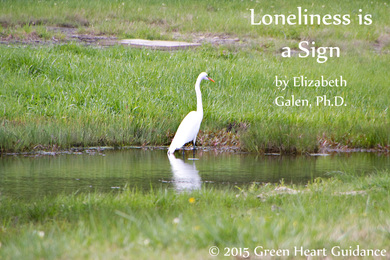
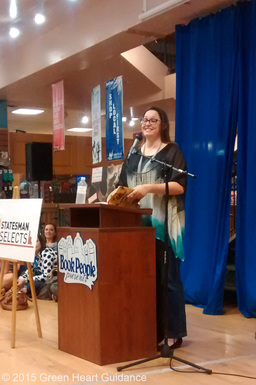

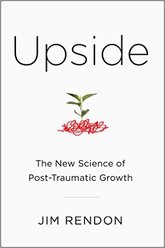



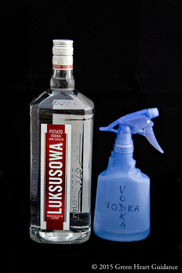
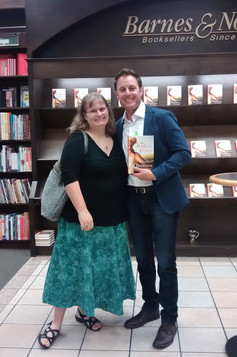





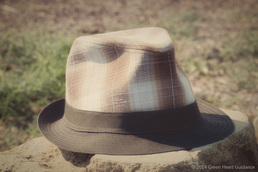


 RSS Feed
RSS Feed